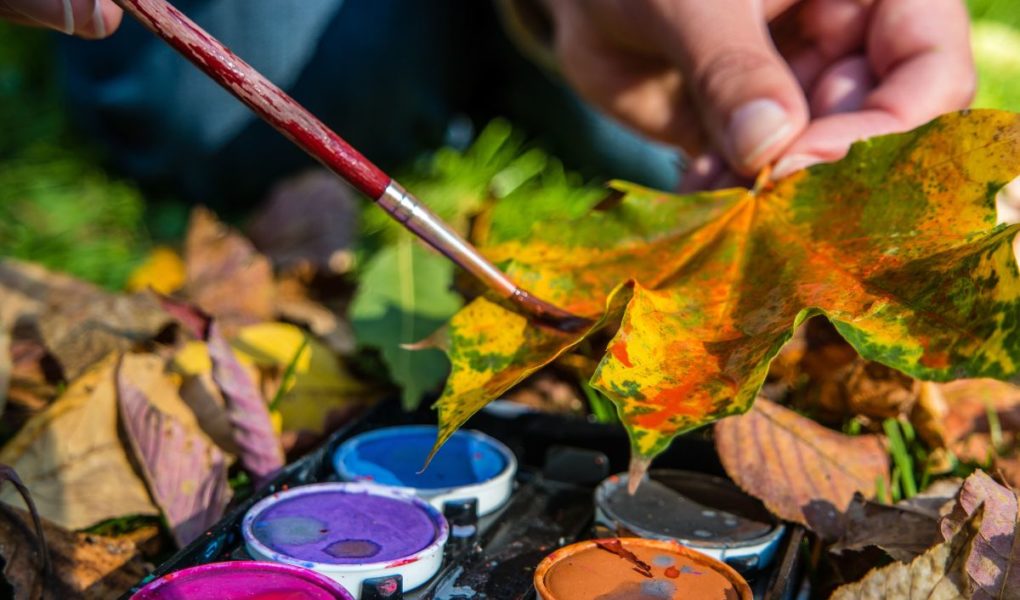Creating art doesn’t always require expensive supplies or specialized skills. Sometimes, the simplest materials—like leaves from your backyard—can be transformed into eye-catching works of art.
Leaf spray painting is a straightforward yet highly creative method that anyone can try. This guide will take you through every step you need to know to master this art form.
How to Choose the Right Type of Leaves for Spray Painting?
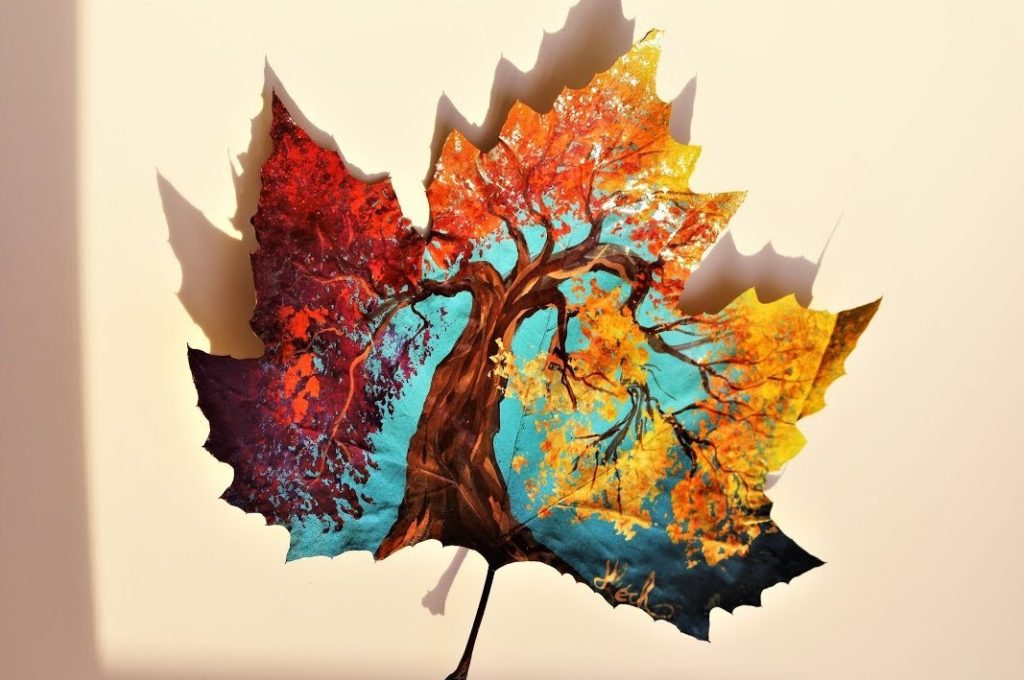
Choosing the right leaves can significantly impact your leaf spray painting project. Opt for relatively flat leaves with distinct, easy-to-recognize shapes for the best results. For instance, maple leaves, oak leaves, and fern fronds are popular choices because they lay flat and have attractive conditions that produce eye-catching outlines.
Ensure the leaves are clean and dry before use to maximize paint adhesion. Avoid leaves that are too wrinkled, torn, or carry excess moisture, which can cause complications during painting.
Things to Look Out For
- Shape: Opt for leaves with distinct, intricate shapes for striking outlines.
- Size: Match the leaf size to your canvas, considering a mix of large and small leaves for visual interest.
- Texture: Choose flat and smooth leaves for better paint adhesion and crisper outlines.
- Condition: Pick fresh leaves free from tears, wilting, or decay.
- Cleanliness: Ensure leaves are clean and dry to improve paint adherence.
What Type of Paint Is Best Suitable for Spray Painting Leaves?
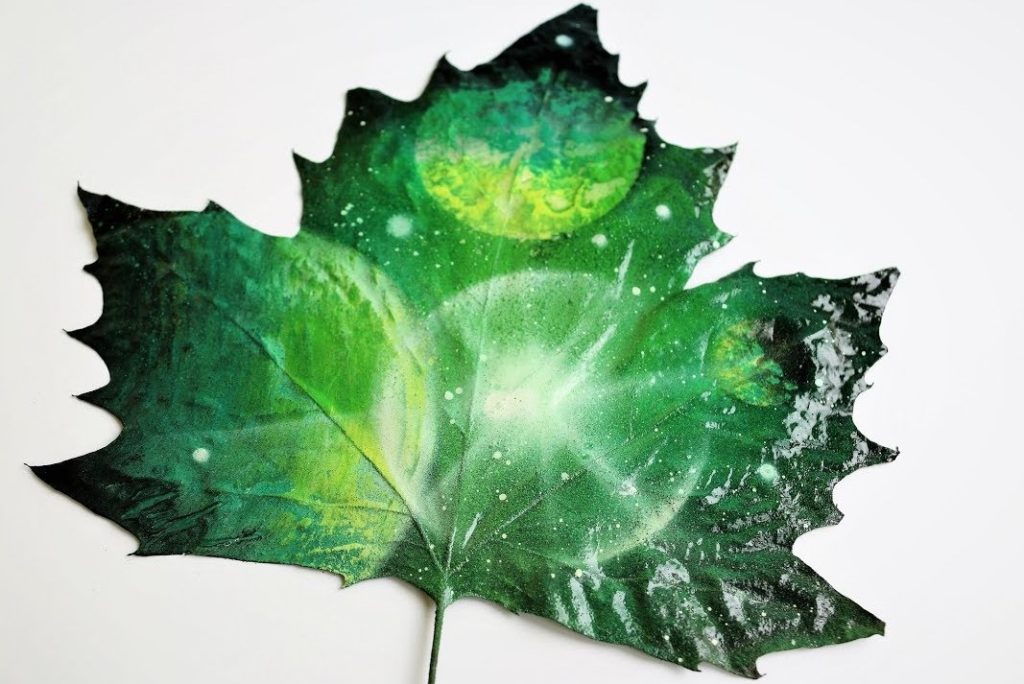
When it comes to leaf spray painting, the type of paint you choose can make a noticeable difference in the final outcome.
Spray paint is generally the go-to option for its ease of application and quick drying time. Here are some considerations:
- Water-Based Spray Paint: This type is easier to clean up and usually emits fewer fumes than its oil-based counterpart. It’s a safer choice, especially if children are involved or if you’re working in less-ventilated spaces.
- Oil-Based Spray Paint: Oil-based options often provide a more vibrant, long-lasting color but have the drawback of more pungent fumes. They’re not recommended for use in poorly ventilated areas or around children.
- Metallic and Glossy Finishes: These add a bit of shimmer and shine to your project, offering a different aesthetic from standard matte finishes.
- Matte Finish: If you prefer a more subdued look, matte spray paints can give your artwork a less reflective surface.
- Quality Matters: Regardless of the type, a higher-quality paint can offer better coverage, a more comprehensive range of colors, and increased durability.
Safety Precautions for Leaf Spray Painting
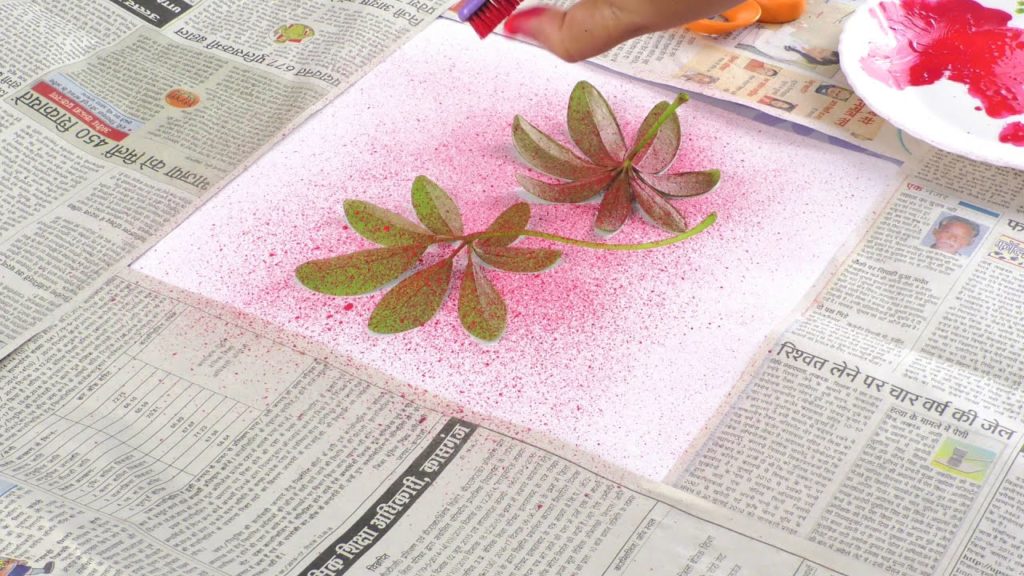
Safety should never be an afterthought, especially when working with spray paints that emit fumes and chemicals.
Always work in a well-ventilated area, preferably outdoors, to minimize inhalation of toxic fumes. Protective gear is crucial; wear safety goggles to shield your eyes and a mask to filter harmful particles.
Gloves are also recommended to prevent skin contact with the paint. Additionally, consider laying down a drop cloth or newspaper to protect the surface you’re working on from accidental spills or overspray.
Following these safety guidelines ensures that you complete your project without any health risks and makes the creative process much more enjoyable.
Step Guide to Spray Painting Your First Leaf
Step 1: Safety Preparations
Before starting your creative endeavor, it’s crucial to focus on safety. Always work in a well-ventilated area, preferably outdoors. Wear safety goggles and a mask to protect yourself from fumes. Now, wear your gloves to prevent paint from getting on your skin.
Step 2: Prepare Your Workspace
Lay down a drop cloth or newspaper sheets to protect the surface you’ll be working on. Set up your paper or canvas on top of this protective layer.
Step 3: Leaf Selection and Arrangement
Choose leaves that appeal to you; they could be big, small, or a mix of both. Arrange them on your paper or canvas in a pattern that pleases your eye. Once satisfied with the arrangement, secure the leaves with masking tape. This ensures they stay in place during the painting process.
Step 4: Let the Painting Begin
Holding the spray paint can approximately 8-10 inches away from the surface, spray over the leaves in smooth, even strokes. Feel free to switch colors and apply multiple layers for a more dynamic effect.
Step 5: The Reveal
After the paint has completely dried, carefully remove the masking tape and lift the leaves off the surface. What remains is a beautiful outline of your foliage, filled with eye-catching colors.
Step 6: Final Touches
Let your artwork completely dry before moving or framing it. If desired, you can add extra details with a paintbrush or markers.
Top Tricks and Tricks
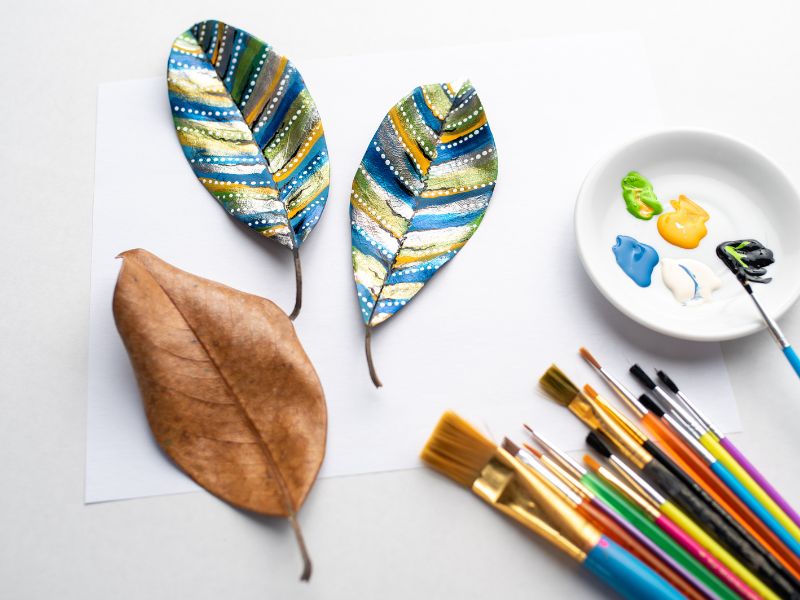
- Test Sprays: Use scrap paper for a few test sprays to get comfortable with your chosen leaves and paint.
- Layering Colors: Experiment with layering different paint shades for more depth and complexity in your design.
- Rotation Technique: Slightly rotate the leaves between color sprays for a more organic, natural look.
- Stencil Variations: Flip the leaf over and use the reverse side for a different textural effect in your artwork.
- Fine Details: After the spray paint has dried, use a paintbrush or paint pens to enhance your work with fine details.
- Clear Coat Finish: Apply a clear coat spray for added durability and a polished appearance once your artwork is fully dry.
Spray paint is most commonly used due to its ease of application and quick drying time. Water-based spray paints are safer and easier to clean.
Most spray paints take between 10-30 minutes to be touch-dry, but it’s best to wait a few hours for complete drying.
It’s recommended to work in a well-ventilated area, ideally outdoors, due to the fumes from the spray paint.
Experimenting with leaf rotation, color layering, and added fine details can make your project more unique and visually appealing.
Yes, using a variety of leaf shapes and sizes can add more depth and interest to your artwork. Just make sure all leaves lay flat for effective painting.
Children can certainly enjoy this project but should always be supervised. Make sure they are equipped with appropriate safety gear like masks and goggles, and choose water-based paints for added safety.
